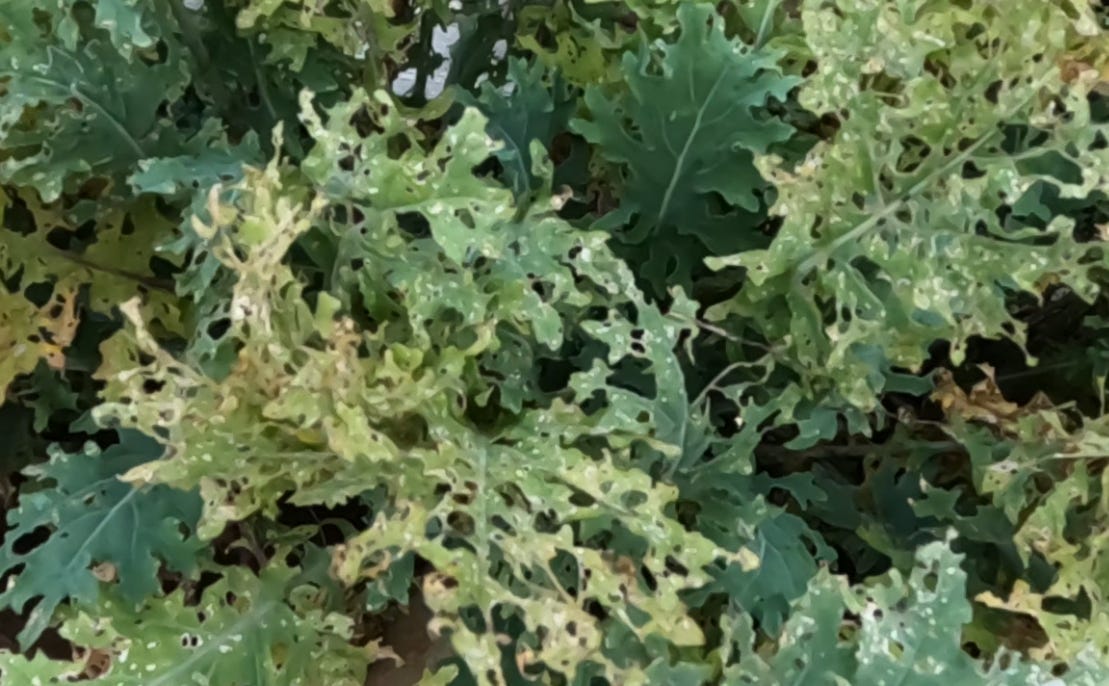Slug/Snail Solutions And My Discontents (part 3)
A quick search online will offer up many solutions for slugs and snails. In this three-part series I review of most of them - and give my take on what makes the most sense.
In the first part of this article I discussed a rage of suggested slug/snail1 solutions, and why they didn’t work for me. Here in part 3, I complete my discussion of what works for me.

Transplants
I mentioned previously that transplants are vulnerable when first planted out - but it is also the case that emerging seedlings are even more vulnerable. I have lost entire beds of things like Brussels sprouts in a matter of nights due to slugs and other pests taking them out quickly when they first emerge as seedlings. The problem here is the hyper-vulnerability of plants when their first leaves emerge.
The cotyledons are the first leaves that emerge from a seed. They contain much of the energy that was stored in the seed, and it is their job to quickly gather energy from the sun to help plants grow and make its "true" leaves (the leaves that allow identification of the plant). If they are removed, the plant dies. If one is removed, the plant loses half its energy at this very critical and vulnerable stage of its life. It's also the case that most cotyledons seem to have almost no natural means to deter pests. They are smooth, soft, and often devoid of natural pesticides - such that many slug-proof plants are nevertheless vulnerable at this stage, and because they are energy-rich, slugs love them.

I start most plants directly in the ground, but for some brassicas in particular - especially Asian greens like pak choy, gai lan, etc. - I find it almost impossible to get them past infancy without severe predation from slugs and other pest like flea beetles. To deal with this problem (because I love greens), I have found that a really simple work-around is to start these plants in seed trays in my driveway (basically a hot, pest-free, lifeless desert) and then move them to the garden when they are about 6” tall. By starting them this way, they need no hardening off because they were never indoors, and they survive their vulnerable stage due to being grown in a “safe space”. When they are transferred to the garden, they still get attacked, but at that stage of their development, they can usually take it, and with a little help, they can make it to maturity.
Pesticides (AKA “Poisonous Chemical”)
The mention of the words “poison” and “chemicals” is usually enough to cause severe and possibly terminal pearl-clutching amongst many gardeners - especially those of the organic persuasion.
Keep reading with a 7-day free trial
Subscribe to The Maritime Gardening Newsletter to keep reading this post and get 7 days of free access to the full post archives.



